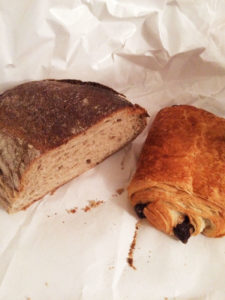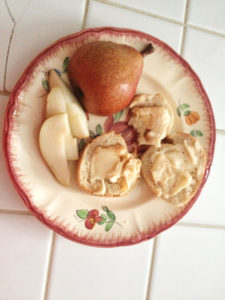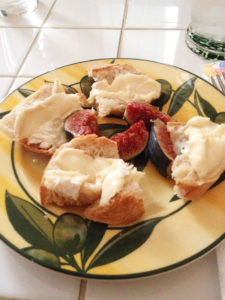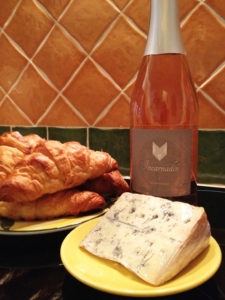Baguettes, Boules and Batards: the Beautiful Breads of France
By Michele Reed
michele@cny55.com
Photos by Bill Reed

With travel disrupted this spring and summer due to the pandemic, we’ve been unable to return to France. While we can’t wait to see our neighbors in the village again, there’s no denying the wonderful food of France is high on our list of things we miss.
We both love the cheeses, fresh vegetables and olives, but the iconic food of France — and my personal favorite — is bread.
Bread, le pain, is so intrinsic a part of French culture, that traditions, superstitions and sayings have evolved around it. There are plenty of taboos, too, including never biting the tip off your baguette while walking down the street.
It’s considered bad luck to lay your baguette upside down on the table, and old-timers have been known to instinctively reach out and turn over a loaf they see laying top down.
And finally, my favorite expression about bread is “Long comme un jour sans pain,” or “As long as a day without bread,” meaning an unbearably long period of time.

When we first bought our house in France, one of the things that thrilled me most was the fact that there was a boulangerie, or bakery, two doors down. Nothing was better than awakening each morning to the aroma of fresh baked bread. Bruno, our artisan boulanger, fired up his wood-burning oven at 5 a.m. and filled it with the baguettes, boules and batards that the villagers lined up to buy at 7 o’clock.
The first thing I would do each morning, even before coffee, was to take the short walk to the boulangerie. At the sound of the bell, Bruno would come hustling out of the kitchen, his T-shirt and apron covered in flour, to hand me my daily bread and share a chat. We soon became friends. Bruno loved to travel and to hear about the world. He took it upon himself to improve my spoken French, often correcting my pronunciation and teaching me new words, both of which I appreciated. For his part, he enjoyed practicing his English skills. He was fascinated by stories of Oswego, our fishing and winter weather, and often said he couldn’t wait to retire so he could come and visit.

The fifth generation of a family of bakers feeding our village for more than 100 years, he took pride in teaching me about the various baked goods on offer. I soon learned to prefer the tradition, a baguette made with grade of flour and recipe both specified by law. He taught me about the sweet brioche and the January 6 King’s Cake complete with a hidden prize, and the southern French specialty of fougasse, a kind of pizza-pretzel hybrid with olives, cheese and sundried tomatoes. Usually if I asked about something I’d never tried before, he’d just wrap it up and give it to me as a petit cadeau, the little gift offered by French merchants.
We were broken hearted when we returned one January to find that Bruno had had to give up the boulangerie and go to work in a bakery in a nearby town, since his only child chose to become a policewoman rather than a baker. One evening, we were watching a popular French TV show “The Best Boulanger in France,” where a local Beziers boulangerie scored 10 out 10 points for a specialty of the region, “La Coque de St. Aphrodise.” This glazed raised doughnut perfumed with fleur d’orange is named after the city’s patron saint. The Boulangerie Cristal became our new go-to source for baked goods, including classic French pastries that were as beautiful to look at as they were delicious to eat.

Once a week, the bakery, which was started by the café owners next door to supply their tables with good bread, would make a huge loaf, four feet long, and set it out on a scarred oak table right on the sidewalk. There, you would specify how much you wanted — by pointing or holding your hands apart — and the baker would cut off a chunk for you.
I’d fill my bread sack on our daily trips to town for errands, and it was all I could do to not devour the lot on the bus ride home. Once there, we’d enjoy a simple lunch of fresh baguette spread with a creamy French cheese, with some apple or tomato slices on the side. A petit blanc, or tiny glass of white wine, completed our French-style lunch.
So, after months of missing the French boulangerie delicacies that were my daily treat, as this spring’s quarantine dragged on, I joined a popular trend among the homebound: baking my own bread.
I found a no-knead recipe, which took nearly 24 hours to complete, the dough rising slowly to achieve a yeasty flavor and chewy bite with a passable crust that brought me back to France. Brie is available here in the States, so a little bit spread on this homemade loaf gave me and Bill and taste of our other home.
We’ll be back in France someday enjoying an artisanal loaf, but until then, it will seem “long comme un jour sans pain.”

